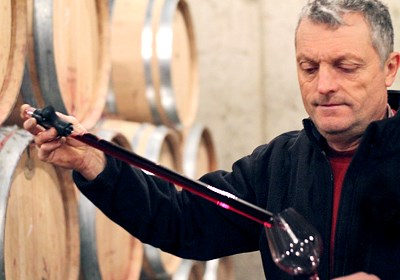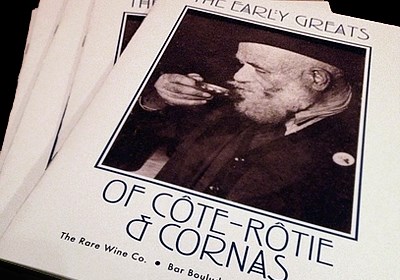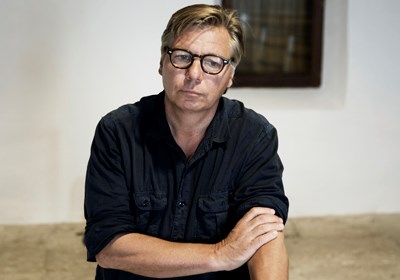
Which site would you like to visit?
By clicking the retail or wholesale site button and/or using rarewineco.com you are choosing to accept our use of cookies to provide you the best possible web experience.
November 23, 2009
Almost every wine aficionado knows about the divide between “modern” and “traditional” winemakers in Piedmont. But far less has been written about a similar clash of philosophies in the Northern Rhône.
Both disputes date back to the 1980s; yet, the results have been very different. In Piedmont, the modernists threw down the gauntlet; openly criticizing the traditionalists and boldly spelling out the transformation they would forge. This not only drew battle lines, it served to educate the world about the differences between the two schools of winemaking.
Today a majority of collectors understand what is meant by a “modern” or “traditional” Barolo or Barbaresco. Had modernism crept in quietly, traditionalism could be on life support today. But the stridency of the modernist manifesto had the opposite effect: to make the world aware of the beauty of the best old-style wines. And the great traditionally made wines of Giacomo Conterno, Giuseppe Mascarello and Bartolo Mascarello are even more sought-after today than they were at the birth of modernism.
The Northern Rhône is in a completely different situation. In the late 1980s—the very moment when modernism was taking off in Piedmont—the Rhône was awakening from a century of domination by large négociants. The few domaine bottlers were mostly old-fashioned in their approach, fermenting in whole clusters, using relatively slow fermentations, and aging in old barrels. Among the giants of this school of winemaking were Marius Gentaz, Noël Verset, Auguste Clape and Raymond Trollat.
However, the late 1980s and early 1990s opened the door for many more Northern Rhône growers to become domaine bottlers. At most estates, the winemaking started out as traditional, but that lasted only a few years. Some domaines—like those of Gentaz and Trollat—had no younger generation to take over. At others, the winemaking was passed on to an enology-school-trained generation, which was influenced not only by the stunning success of Guigal and Chapoutier, but new developments in Europe, America and Australia.
Their eyes widened, the young vignerons soon filled their cellars with new barrels, slashed their yields, altered their fermentations to enhance color and extraction, and began to destem all their fruit in search of a softer palate. Today, the number of Northern Rhône domaines producing wine under their own labels has skyrocketed. But how many winemakers under the age of 40 make wine even remotely as their fathers and grandfathers did?
It can be argued, of course, that this is all for the good. The standard of small-domaine winemaking in the Northern Rhône 30 years ago was, in fact, well below that of the traditional winemakers in Piedmont. For every Gentaz or Clape who made magical wines, there were a dozen vignerons making overly tannic or unclean wines. Wasn’t winemaking in Northern Rhône in desperate need of the makeover it received?
Perhaps, but at what cost? Syrah clearly adapts more readily to “modern” winemaking than does Nebbiolo, and there are world-class wines being made on both ends of the Northern Rhône spectrum. However, there is an utter singularity to the greats of the Northern Rhône’s traditionalists, and it would be a tragedy if that heritage were to fade away.
Other than the octogenarian Auguste Clape, there may not be a pure traditionalist still making wine at a high level in the Northern Rhône. Instead, a new “Third Stream” has appeared which, for lack of a better term, can be called “Classicist.” Leaders of this school are René Rostaing and the Jamet brothers in Côte Rôtie, Chave and Sorrel in Hermitage, Gonon in St. Joseph and Thiérry Allemand in Cornas. While these producers have all incorporated modern ideas in their winemaking, each is a strong believer in typicity, fiercely defending the idea that Côte Rôtie should taste like Côte Rôtie, not like Hermitage, and certainly not like new world Syrah.
With Noël Verset having retired in 2007, and Auguste Clape nearing retirement, there may in fact be no future for pure traditionalism in the Northern Rhône. But thanks to the work of Allemand, Jamet, Rostaing, and others, a philosophy has emerged that incorporates some new ideas while capturing the best of the region’s traditions: to make wines of purity and expression that are the essence of their region, village, and vineyard. Given all that’s happened over the past twenty years, this “classicist” philosophy offers the best hope that typicity can survive in the Northern Rhône.
But will it in fact survive? Without the outcry that brought the traditionalists back in Piedmont, and without educated consumers demanding less homogenized wines from Northern Rhône appellations, it’s conceivable that within a generation or two, once-noble appellations like Hermitage, St. Joseph, Côte Rôtie and Cornas will have little meaning.
If we don’t want this to happen—and we want transcendent wines like those of Gentaz and Verset to again flourish in the Northern Rhône—it is incumbent on journalists, merchants and collectors to champion these endangered wines, with their words and their purchases, just as they did when old-style Barolo was on the ropes. It could be these wines’ only hope of survival.





New discoveries, rare bottles of extraordinary provenance, limited time offers delivered to your inbox weekly. Be the first to know.
Please Wait
Adding to Cart.
...Loading...


By clicking the retail or wholesale site button and/or using rarewineco.com you are choosing to accept our use of cookies to provide you the best possible web experience.

